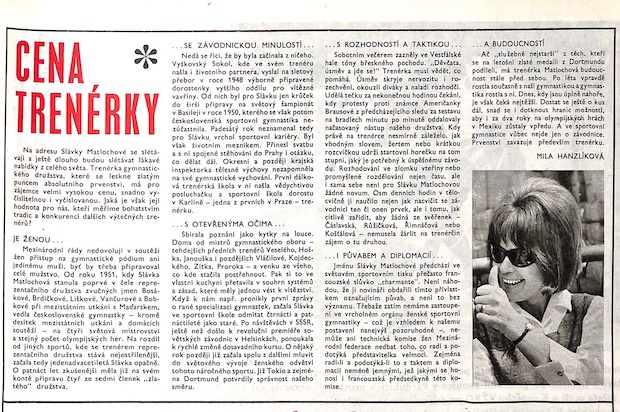A qualification system was put in place for the Munich Olympic Games. Countries had to achieve specific scores during a set period in order to participate in the Olympic Games.
Here were the rules guiding the process.
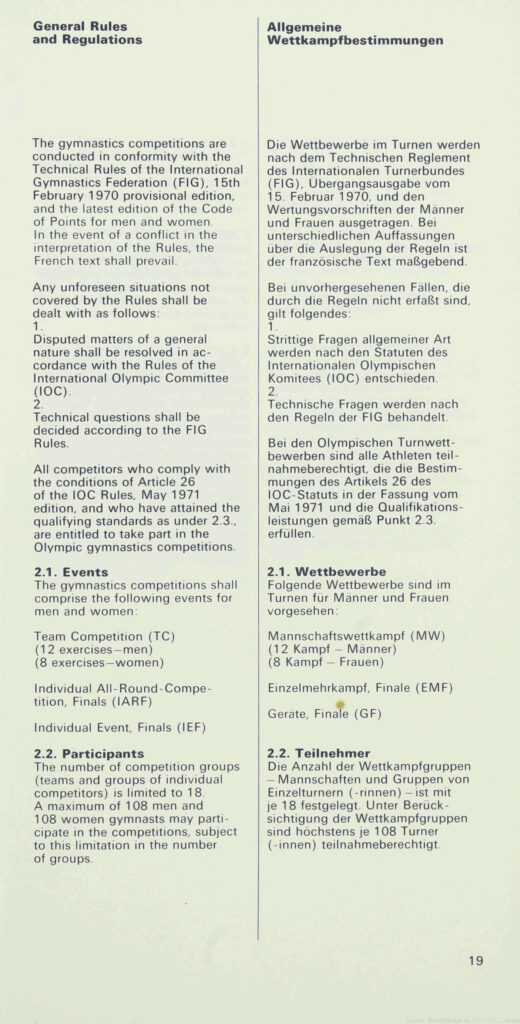
A qualification system was put in place for the Munich Olympic Games. Countries had to achieve specific scores during a set period in order to participate in the Olympic Games.
Here were the rules guiding the process.

At the 1961 University Games (also called the Universiade) in Sofia, Bulgaria, gymnastics was added to the program for the first time. It wasn’t a large competition — only 18 women and 28 men participated in the individual all-around competition.
But there were some big names, including 1960 Olympic gold medalists Mitsukuri Takahashi and Tamara Lyukhina, 1960 silver medalist Yuri Titov, as well as 1960 bronze medalists Sonia Iovan, Emilia Liță, and Elena Leușteanu. (There were other World and Olympic medalists at the competition.)
The events were split between two days: August 27 and August 28. The women competed on beam and floor on the first day and on bars and vault on the second. The men competed on floor, pommel horse, and rings on the first day and on vault, parallel bars, and high bar on the second day.
What follows are the complete results from the competition.
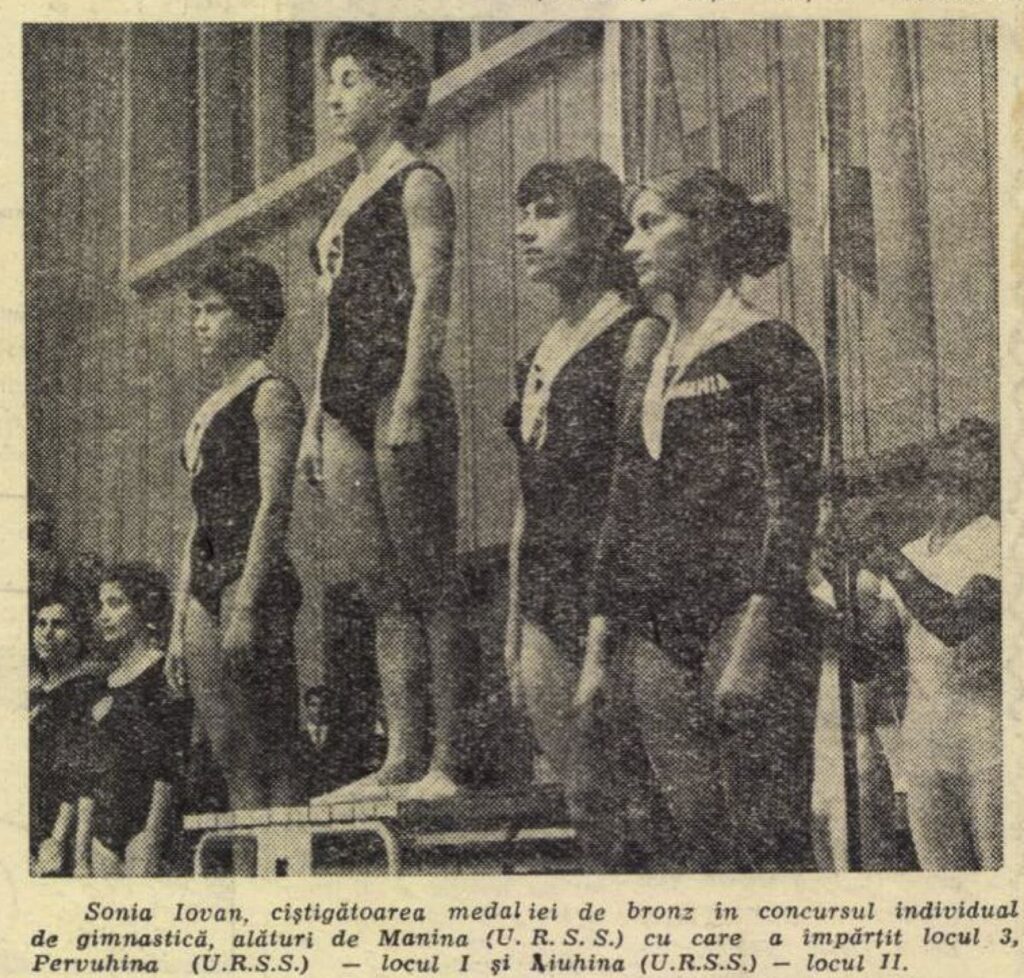
From 1956 until 1962, Larisa Latynina dominated the all-around at the major international gymnastics competitions. Then, it was Věra Čáslavská’s turn, and she won the major all-around titles from 1964 until 1968.
Once Čáslavská retired from the sport, there was a power vacuum. The title of the world’s best female gymnast was up for grabs. Who would win the all-around title in 1970? Would it be Karin Janz, who won the all-around at the European Championships in 1969?
The gymnastics world had its reservations about Karin Janz. Sure, she had tremendous difficulty, but she lacked “femininity and softness.” Words like “machine” and “mechanical” were often used to describe her gymnastics.
The following profile of Janz, printed in the Czechoslovak magazine Stadión before the 1970 World Championships, summarizes many conflicted sentiments about the East German teenager.
Between the Mexico City Olympics and the Ljubljana World Championships, the Czechoslovak coaching staff had changed. Luděk Martschini was coaching the Swiss women’s team, and long-time head coach Jaroslava Matlochová was coaching in Italy.
Alena Tintěrová was in charge of the women’s program in 1970, and at the training camp before the World Championships, each coach was responsible for a different event. Jaroslav Šťastný, for example, was responsible for floor, while Petr Kouba was responsible for bars.
Here’s what Tintěrová and the other coaches were thinking as they prepared the team for the World Championships in Ljubljana.
1970 was a time of change for the Czechoslovak women’s team. The majority of the gymnasts who won gold at the 1966 World Championships had retired, including Čáslavská. Several of their coaches had also left. Luděk Martschini was coaching the Swiss women’s team, and long-time head coach Jaroslava Matlochová was coaching in Italy.
For the Czechoslovak men, there was some optimism ahead of the World Championships in Ljubljana. After the team finished fourth at the Mexico City Olympics — just 0.05 behind the East Germans — there was some optimism. That said, the Czechoslovak team was going to put together a young, inexperienced team for the 1970 Worlds.
Here’s what was reported in the pages of Stadión after the 1970 Czechoslovak Championships.
Zdena Honsová was part of the Czechoslovak team that won gold at the 1948 Olympic Games. Had there been an all-around competition, Honsová would have won the gold medal in London. She was also part of the Czechoslovak team that took bronze at the 1954 Rome World Championships. (By then, she had married, and her surname was Lišková.)
Twenty years later, Honsová’s daughter, Hana Lišková, was part of the Czechoslovak team that won silver at the Mexico City Olympics and bronze at the Ljubljana World Championships. Her gym was so small that it could not fit a full-size floor exercise mat.
Here’s their story, as told by the Czechoslovak magazine Stadión.
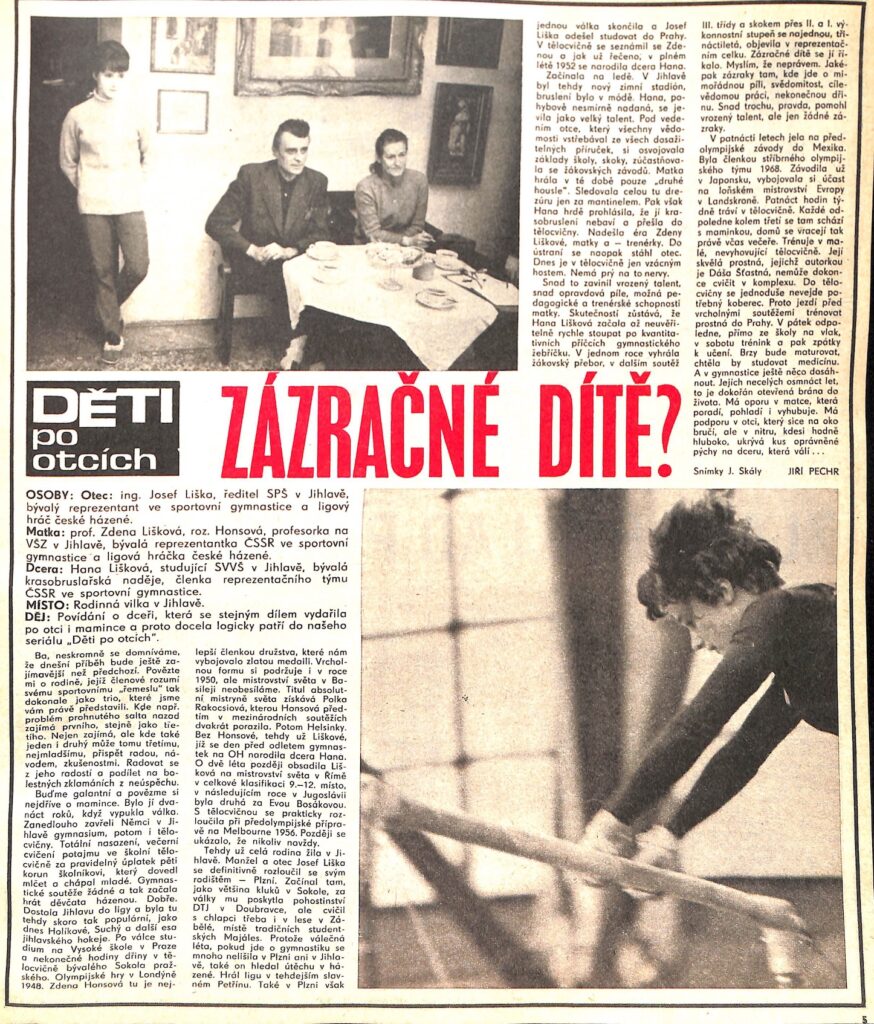
Unlike much of the Czechoslovak team, Marianna Krajčírová was Slovak — not Czech. She was part of the 1964 Czechoslovak team in Tokyo, as well as the 1966 World Championships team that won gold. On a personal level, 1967 was her break-out year. At the 1967 European Championships, she finished third in the all-around and third on bars. Then, at the 1967 “Little Olympics” in Mexico City (essentially an Olympics Test Event), she finished second behind Soviet gymnast Natalia Kuchinskaya.
Here’s a 1967 profile from Stadión on Krajčírová, whose father built her a balance beam to train on at home. Plus, there’s a translation of a short interview with Krajčírová (Némethová at the time) from 1970.
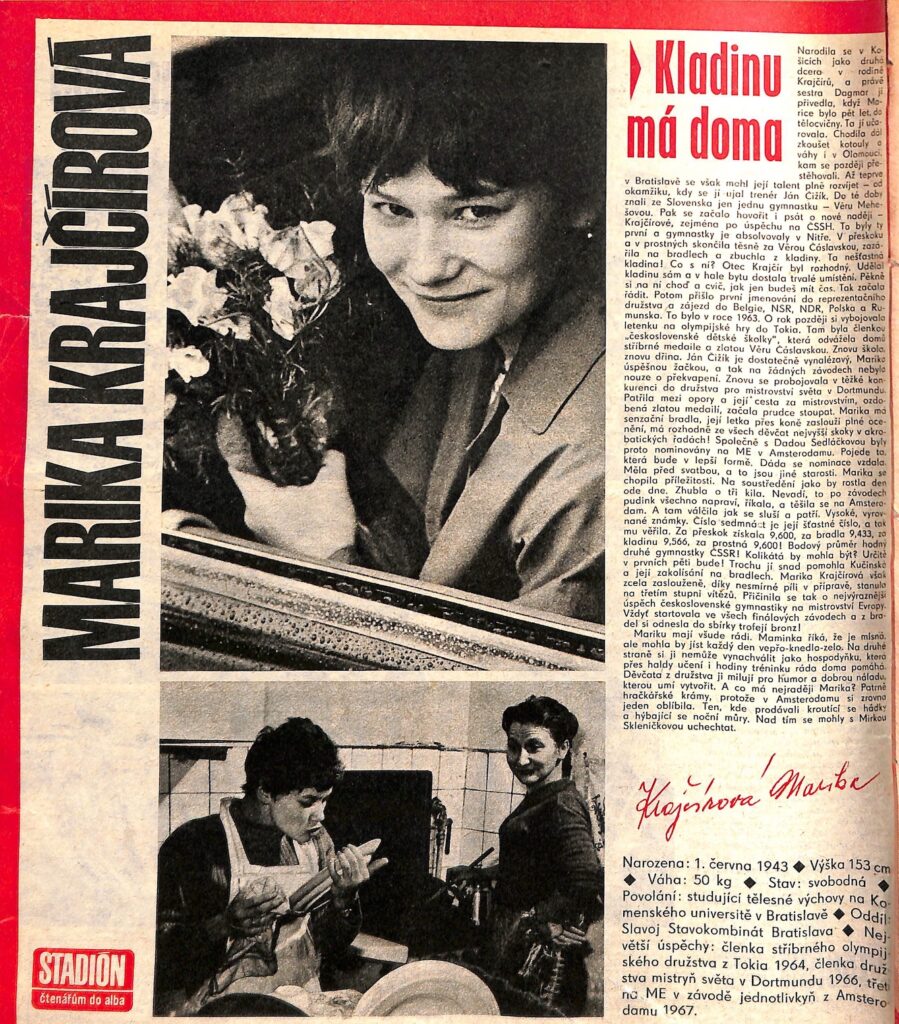
No surprise: Věra Čáslavská won the Czechoslovak Championships in April ahead of the 1967 European Championships. The big news was that she had upgraded her routines, adding a front handspring to needle scale on beam, as well as a full-twisting hecht dismount from the upper rail on uneven bars.
Let’s take a look at what happened at the 1967 Czechoslovak Nationals.
Sovetsky Sport, the main sports newspaper of the Soviet Union, had nothing but good things to say about the Soviet women’s gymnastics team in Mexico City. (As we’ll see, the publication had more than a few critical things to say about the men.) In particular, the writers applauded the performances of Natalia Kuchinskaya and highlighted the friendship among the gymnasts as the key to their success.
In this post, we’ll look at the newspaper’s coverage of everything from the compulsories to Larisa Petrik’s gold medal on floor — a feat that she never thought possible.
Note: You can find the main articles for the women’s competition here: Compulsories, Optionals, Event Finals, The Myth of Petrik’s Floor Score.

Jaroslava Matlochová was a fixture of the gymnastics community for decades — both as a coach and as a member of the Women’s Technical Committee. In fact, she was one of the early champions of relying on younger gymnasts in women’s artistic gymnastics. Yet, little has been written about her online.
So, here’s a translation of a profile on her, printed in Stadión just after the Czechoslovak women’s team took gold at the Dortmund World Championships.
